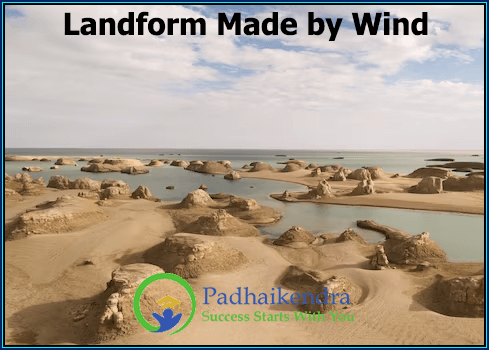Wind is a powerful natural force that can create a variety of unique landforms over time. The erosive power of wind is particularly effective in arid and semi-arid regions, where there is little vegetation to hold the soil in place.
Here are some examples of landforms created by wind:
- Sand Dunes: Sand dunes are hills or ridges of sand that have been formed by wind erosion and deposition. They are typically found in desert regions and along coastlines where there is a constant source of sand. Sand dunes can be very large, some reaching up to 800 meters in height, and can take on a variety of shapes including crescents, stars, and barchans.
- Yardangs: Yardangs are elongated ridges of rock or soil that have been shaped by wind erosion. They are typically found in desert regions where there is little vegetation to hold the soil in place. Yardangs can take on a variety of shapes, from long, straight ridges to more complex, sinuous forms.
- Ventifacts: Ventifacts are rocks that have been shaped by wind erosion. They are typically found in desert regions and have a distinctive faceted appearance caused by the abrasion of windblown sand. Ventifacts can take on a variety of shapes and sizes, from small pebbles to large boulders.
- Desert Pavement: Desert pavement is a rocky surface layer that is created by wind erosion. As windblown sand gradually removes the finer soil particles, the larger rocks and pebbles are left behind to form a hard, compacted surface layer. Desert pavement is typically found in arid regions where there is little vegetation to hold the soil in place.
- Loess: Loess is a type of sediment that is made up of windblown silt and clay particles. It is typically found in areas where windblown dust is abundant, such as the Midwest region of the United States and parts of China. Loess can be very thick and can form steep cliffs and hillsides.
Overall, wind is a powerful force that can shape the Earth’s surface over time. The landforms it creates can be both beautiful and awe-inspiring, providing a window into the natural processes that have shaped our planet over millions of years.





